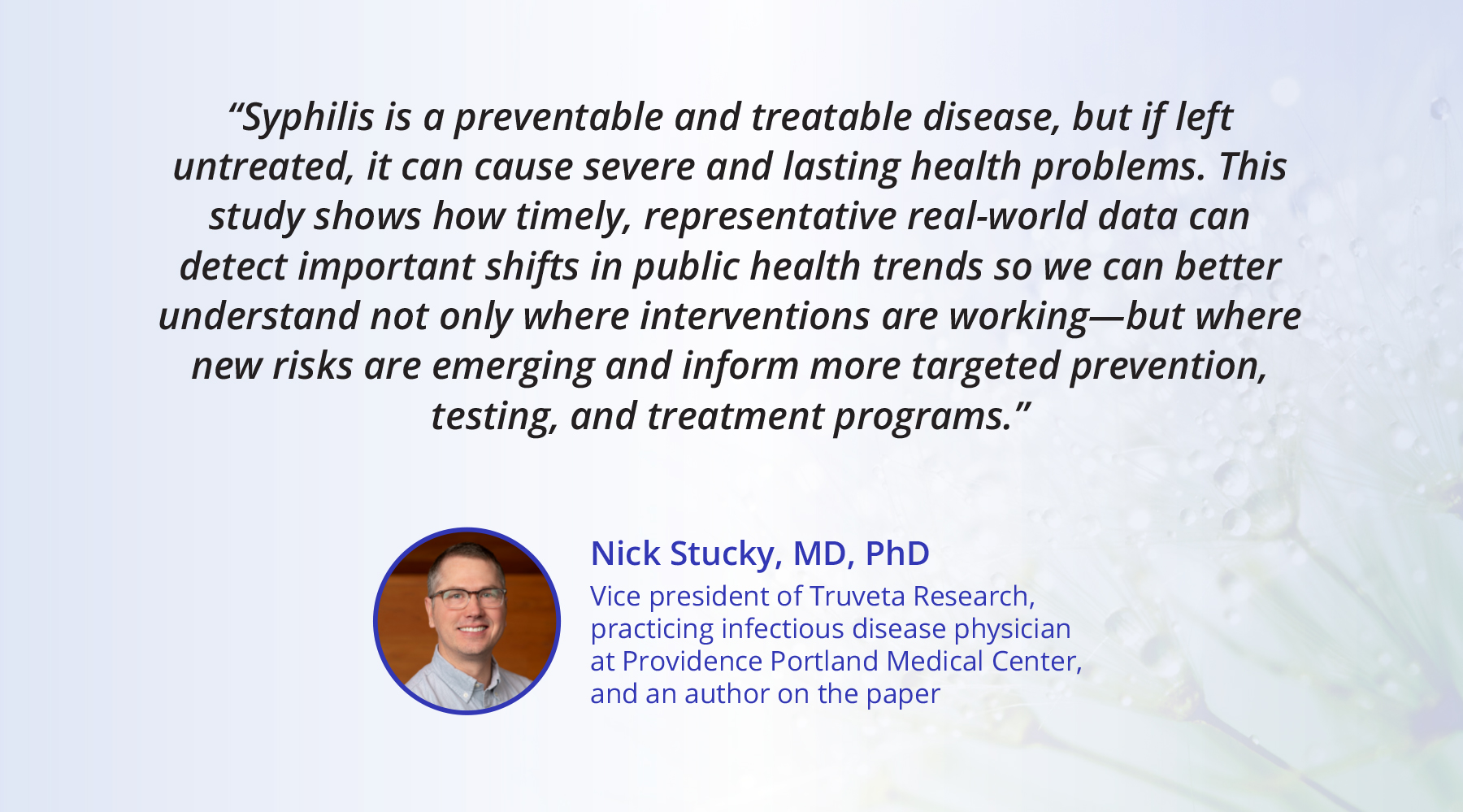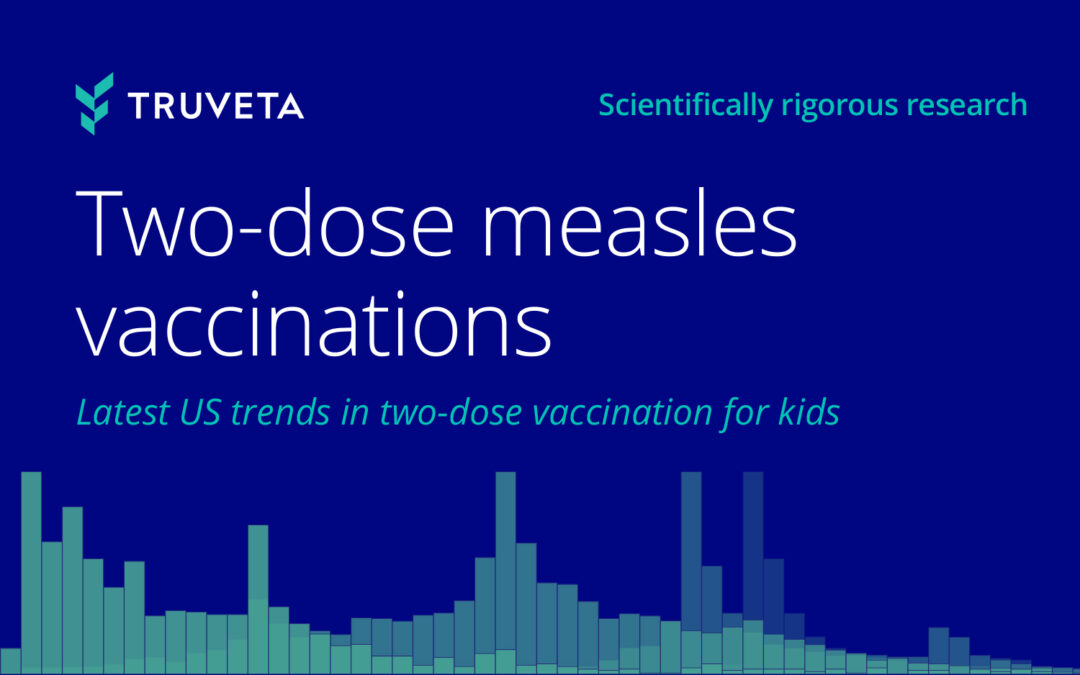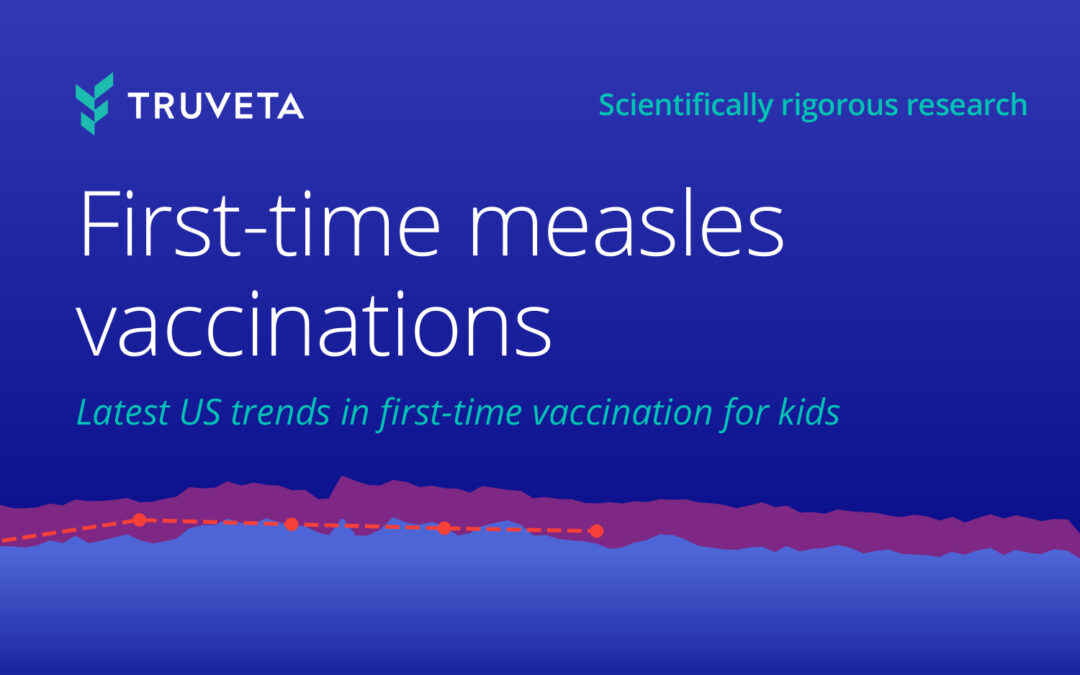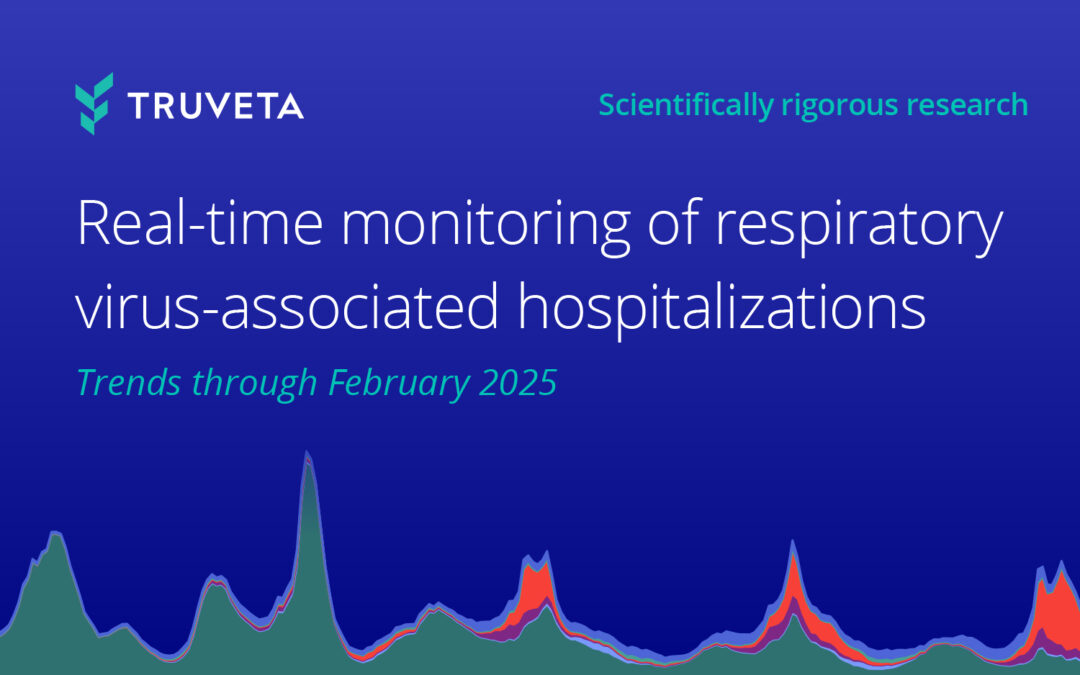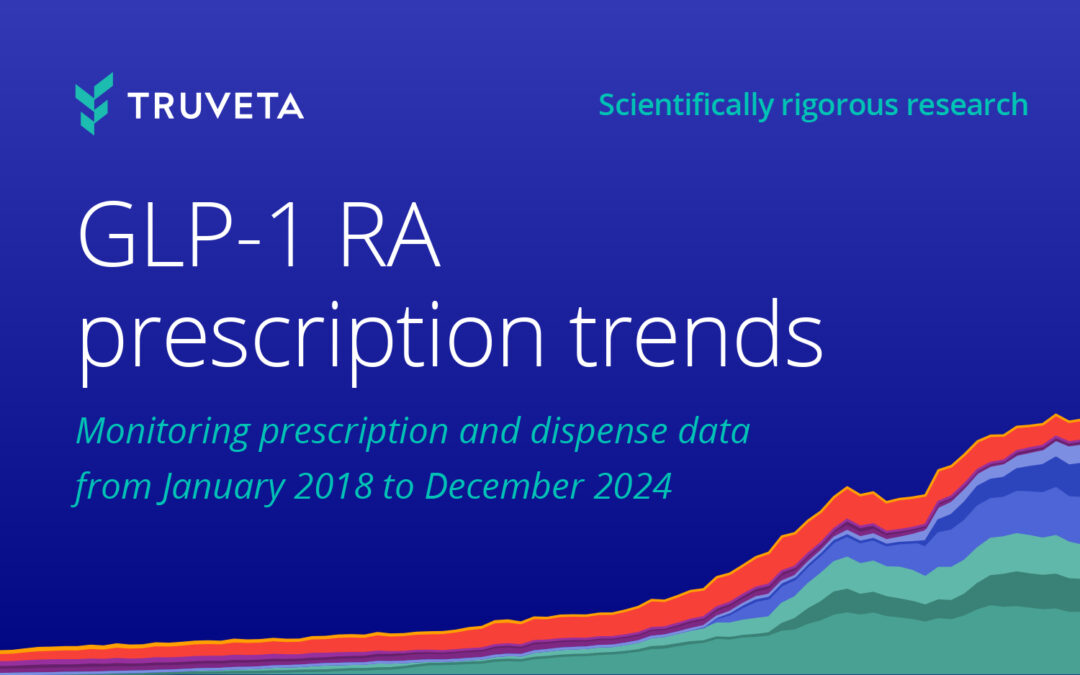- Truveta Research explored the monthly trends in the incidence of syphilis among US adults from January 2017 and October 2024. During the early months of the COVID-19 pandemic, the rate of syphilis incidence (e.g., new infection) increased significantly, reaching a peak in November 2022. By late 2024, syphilis rates returned to pre-pandemic levels.
- Though historically concentrated among men and those living with or at higher risk for HIV, this new analysis shows rising incidence among women. From 2017 to 2024, women went from representing just 27% of new diagnoses to 43% by 2024.
- Racial and ethnic disparities were also pronounced. Black, American Indian/Alaska Native, and Native Hawaiian/Pacific Islander individuals experienced the highest incidence rates. Meanwhile, Hispanic individuals made up a growing share of new cases—rising from 10% in 2017 to 26% in 2024.
Syphilis is a preventable and curable sexually transmitted infection (STI). Left untreated, syphilis is associated with life-threatening complications – including brain damage, deafness, blindness, fetal death, and an increased risk of acquiring other sexually transmitted infections (STIs).
The US Centers for Disease Control (CDC) has suggested that in 2022 the number of cases of syphilis infections reached its highest level since the 1950s, raising concerns about the transmission of this STI and the potential outcomes of untreated infections.
To contribute to public health information about the most recent transmission rates of syphilis, Truveta Research explored trends in the incidence of syphilis among US adults from January 2017 to October 2024.
Today, that study was published in the American Journal of Preventative Medicine.
Key findings
Using Truveta Data, the study analyzed real-time electronic health record data from over 56 million U.S. adults between January 2017 and October 2024 and identified 21,180 first-time syphilis cases and tracked monthly incidence trends over nearly eight years.
The study identified a significant increase in syphilis incidence from 2017 to mid-2022, followed by a decline through late 2024, with the decline most pronounced in historically high-burden populations — including men, younger adults, individuals identifying as Black, those with behaviors associated with STI acquisition, those using PrEP for HIV prevention, and individuals living with HIV. Although their incidence remained elevated, these declines highlighted promising trends. Public health interventions may be having a positive impact on reducing the spread of syphilis within these communities.
While syphilis has historically been more prevalent among certain groups, this study reveals changing trends. Over the entire study period, syphilis incidence generally increased at a higher rate for women, those without behaviors associated with STI acquisition, PrEP use for HIV prevention, or living with HIV. Concurrently, the proportion of new syphilis diagnoses among women has risen, increasing from 27% in 2017 to 43% by 2024.
Racial and ethnic disparities were also pronounced. Black, American Indian/Alaska Native, and Native Hawaiian/Pacific Islander individuals experienced the highest incidence rates. Meanwhile, Hispanic individuals made up a growing share of new cases—rising from 10% in 2017 to 26% in 2024.
The results suggest a shift in transmission dynamics and underscore the urgent need for targeted education, testing, and treatment efforts in populations that may not traditionally see themselves at risk for syphilis.
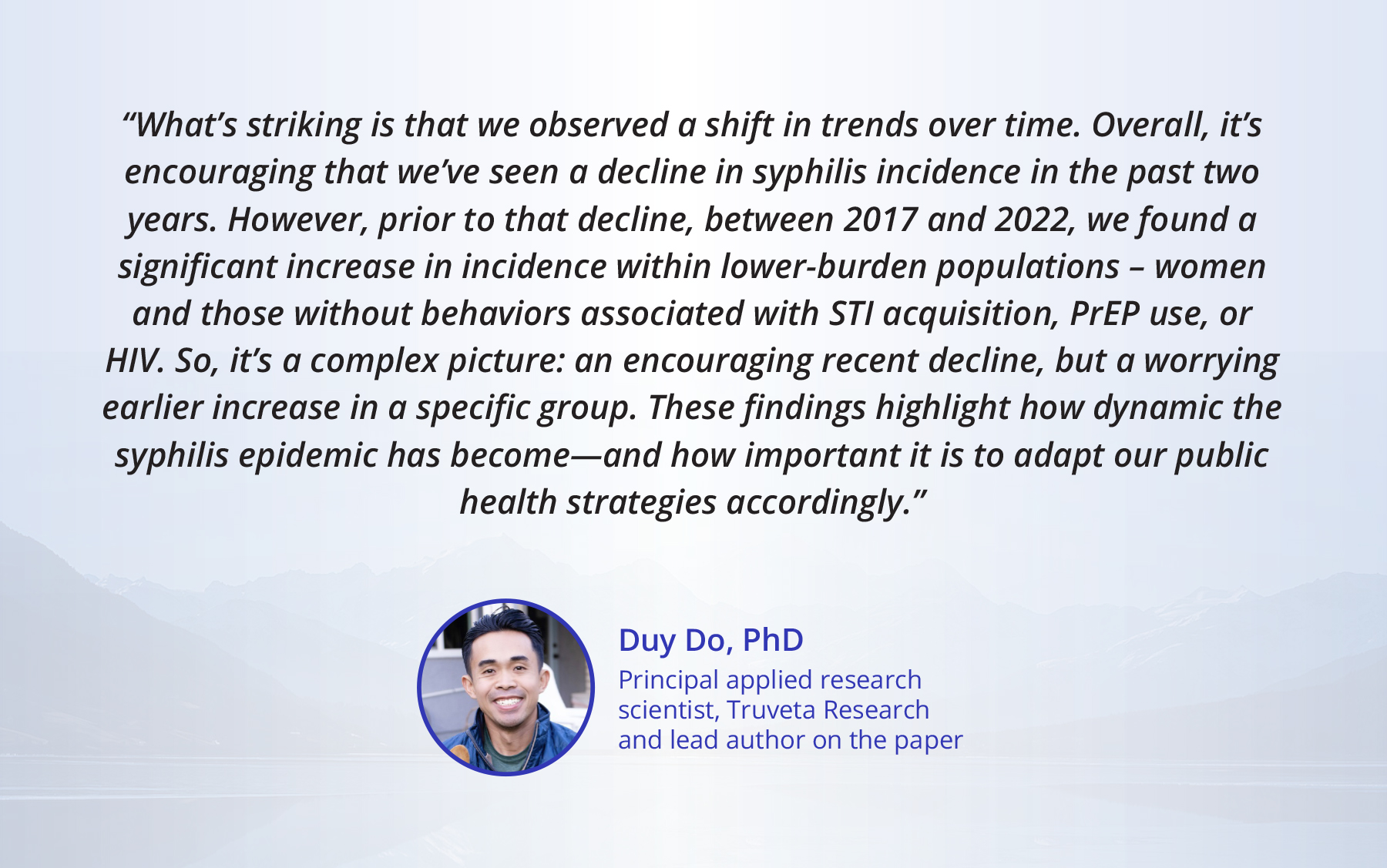
This study demonstrates the critical role data plays in advancing health equity and responding rapidly to shifting epidemiological trends.
